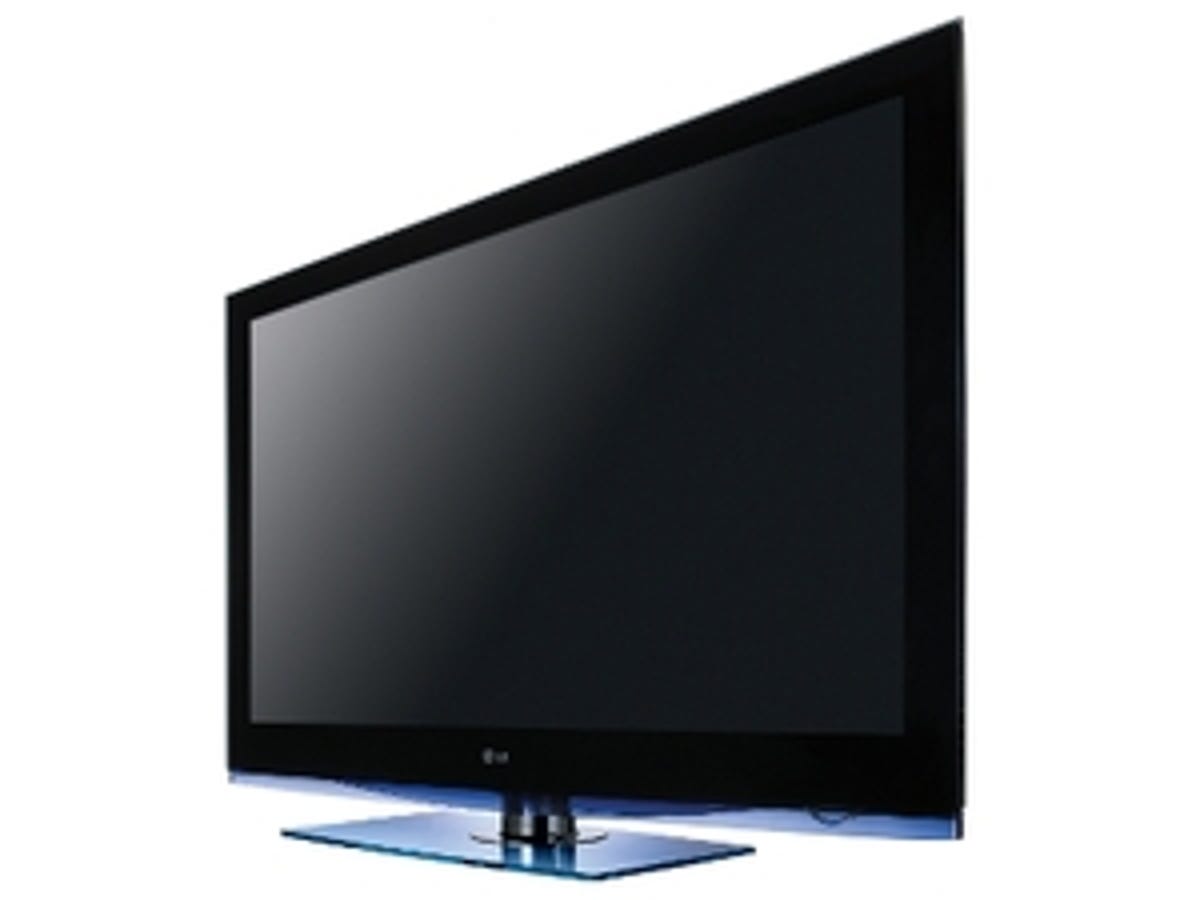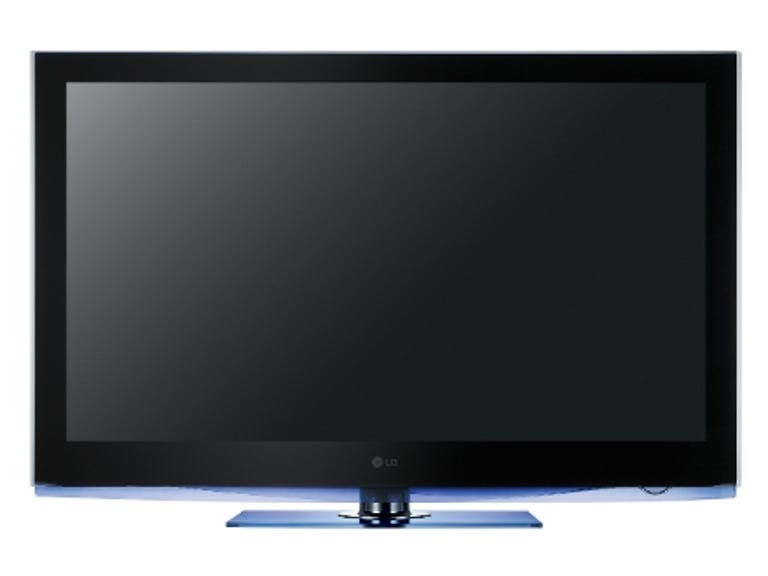 Why You Can Trust CNET
Why You Can Trust CNET LG PS7000 (50PS7000) review: LG PS7000 (50PS7000)
Aggressively priced for a 50-inch, 1080p plasma TV, the 50PS7000 nevertheless packs a powerful punch. It's tastefully designed, offers good connectivity and sports exemplary menus. Most importantly, its pictures are unusually aggressive for a plasma set, so its hi-def performance is frequently spectacular
After winning us over last week with the amazingly affordable 47LH3000 LCD TV, LG is trying to do it again with the 50PS7000, a 50-inch, 1080p plasma telly that can be found online for around £950. The question is: can the 50PS7000's plasma technology deliver as powerful a punch as LG's current large LCD sets?
The Good
The Bad
The Bottom Line
Tasteful design
While not as visually delicious as some of LG's current TVs, there's still plenty of subtle appeal in the 50PS7000's bold, large, glossy black bezel. The deep black is pleasantly offset by a transparent trim, and a see-through, blue-tinged strip along the TV's bottom edge that follows through into the blue-tinted glass desktop stand.
In addition to its generally opulent build quality, the 50PS7000 has a good set of connections, including four HDMI ports, a USB 2.0 port and a PC port. There's also a key connection that you can't see: wireless Bluetooth connectivity, for streaming in photos or songs from a Bluetooth mobile, or playing sound to Bluetooth headphones. The USB port can handle DivX high-definition video, as well as the more typical JPEG and MP3 file formats. Excellent.
Exemplary menus
'Excellent' is also the word that comes to mind when you start exploring the
50PS7000's on-screen menus. Their sensible structure and terrific
presentation make them pretty much a blueprint for other brands to
follow.

We'd like it very much, too, if other brands followed the lead of the 50PS7000's 'picture wizard' system, which guides you through optimising your picture settings via a series of well-explained built-in test signals.
The 50PS7000's flexibility is also impressive for the price. Tucked away within the on-screen menus are unexpectedly high-level fine-tuning options, such as dynamic-colour and contrast adjustments, various gamma settings, a black-level booster, and a processor for enhancing edges.
So extensive are the 50PS7000's picture tweaks, in fact, that the picture-preset list contains a couple of options labelled 'ISF'. They're for use by an Imaging Science Foundation expert, so that, if you're willing to pay for the service, you can get perfectly calibrated night and day picture options.
The 50PS7000's last really noteworthy feature is its 600Hz processing. As is the case with Panasonic's supposedly 600Hz plasmas, this figure doesn't actually mean the picture refreshes 600 times a second. Rather, it's arrived at by adding loads of extra frames of image data to smooth and sharpen motion reproduction. LG's 600Hz system may not work quite as well as Panasonic's, but its effects are, for the most part, distinctly beneficial, especially when it comes to reducing judder.
Aggressive pictures
The 50PS7000's pictures are exceptionally bright, and colours are vibrant. These areas are usually considered shortcomings of plasma, as opposed to LCD, technology but the 50PS7000's pictures pop off the screen with an intensity that few LCD sets can rival. Part of the reason for this is that, as is usual with plasma technology, the 50PS7000 can produce relatively deep blacks without having to dim the rest of the image's brightness, as happens with most LCD TVs.
The 50PS7000 also renders HD sources with impressive sharpness. Just make sure you turn off the set's noise-reduction and edge-enhancement circuits when watching HD material, as the former softens the picture up, while the latter can over-sharpen the image to the point where it looks noisy.
Image flaws
When at its best, with bright, colourful HD footage, the 50PS7000 really can look quite spectacular. But one or two notable picture problems prevent it from attaining the sort of consistency seen in truly outstanding TVs.
The most disturbing issue is image retention, whereby bright parts of an image leave behind ghostly shadows that can remain visible over quite a few seconds of subsequent footage. This phenomenon used to be common with plasma screens, but most manufacturers have now more or less eliminated it.
We weren't blown away by the 50PS7000's standard-definition pictures either. They tend to suffer from some slightly unnatural colours and relatively high noise levels. They're certainly always watchable -- it's just that we've seen better elsewhere.
Perhaps the 50PS7000's most unexpected shortcoming is the appearance of low-level greyness in parts of the picture that should look black. Actually, calling this a shortcoming is rather unfair considering that the 50PS7000's black-level response is markedly better than that of most LCD TVs. But, at the same time, Panasonic, Samsung and especially Pioneer plasma screens all deliver profounder black levels than those of the 50PS7000.
Sonically, the 50PS7000's performance is passable but flawed. On the upside, it's capable of decent volume levels, and it's good at bringing out subtle treble details. On the downside, it tends to over-emphasise those treble details, leaving rich audio mixes sounding rather sibilant and bass-light.
Conclusion
If you're looking for a decently priced TV that's going to live predominantly on an HD diet -- a screen for a dedicated movie or gaming room, perhaps -- the LG 50PS7000 is definitely worth considering. But its underwhelming standard-definition performance reduces its potential as a main living-room screen, and its image-retention issue has the potential to aggravate even when you're watching HD.
Edited by Charles Kloet
